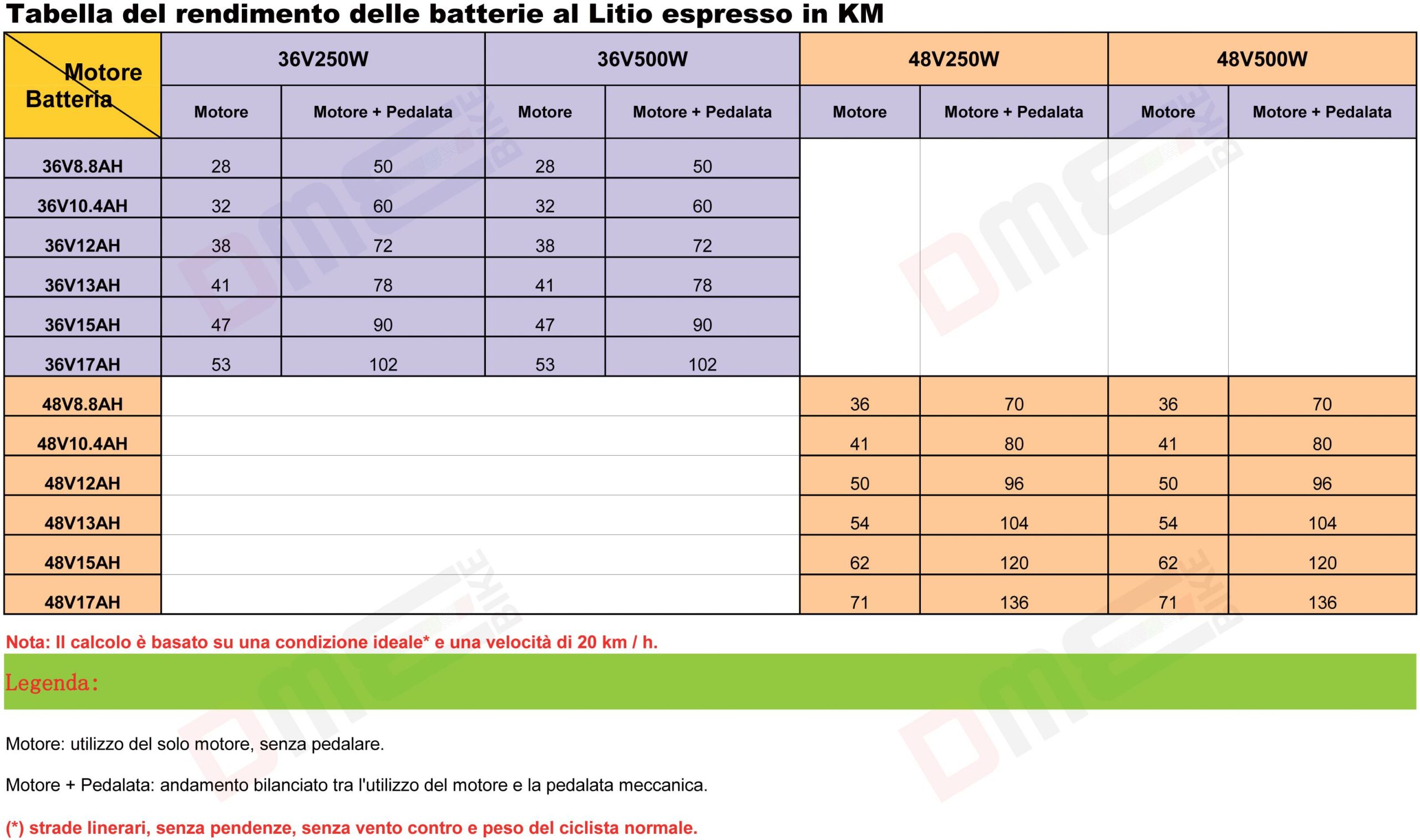La batteria

Battery
A subject of fundamental importance regarding electric bicycles is, of course, the battery.
If you buy an electric bike for the first time, you will certainly find yourself facing parameters that you will not always be able to decipher.
Volt, Ampere-hour, WATT now, what do these parameters specifically indicate? We try to do a little ‘order, in a simple way.
The batteries consist of many individual cells connected together. Every single cell has a more or less constant typical tension, which depends on its chemistry. For NiCd and NiMH, this is about 1.2V, for acid lead is 2.0V, and for Lithium cells it is of the order of 3.7V.
Electric bikes and scooters are designed to operate on 24, 36, or 48 volts, so a number of cells must be connected in series to achieve the desired voltage.
A battery pack with a nominal voltage of 36V can be obtained from a series of 10 lithium, 18 lead-acid or 30 NiMH cells.

Given this, let’s see how to interpret the parameter 36V10Ah that is usually found on the batteries:
I VOLT (V)
Volt: it is the international measurement unit for the electric voltage. The abbreviation is V. In order to have a simple idea of the effect that the VOLTS of a battery has on an electric bike, you have to think of the volts as the “shot” of an athlete at gunshot. The higher the number of volts, the more the bike will be snappy (control unit permitting).
The less the volts, the more the bike will be weak. An electric bike with a 36V battery will face uphill roads with more verve than an electric bike with a 24V battery.
Obviously replacing the battery of your electric bike with one with a higher number of VOLTS is not the solution to “upgrade” your bike: the Volts must always be in line with the rest of the parameters of the electric bike, as a battery with too high a number of Volts it could irreparably damage the bike control unit or the engine.
Furthermore, you may run the risk of suffering an electric shock or making the bike illegal.
THE AMPERE-NOW (Ah)
Ampere-hour (abbreviation Ah): it is the unit of measurement of the electric charge and indicates the charge available. The duration of a battery during the work (load = current demand) is directly connected to its capacity measured in ampere-hour (Ah).
A package that can supply 1 amp for 1 hour has a capacity of 1 Ah. Let’s assume that using the bike, on average it consumes a current of 10 amps and has a 10 Ah battery pack.
In this case one should expect an autonomy of 1 hour.
WATT now
It is the unit of measurement of the yield. It corresponds to the energy that a system with a power of 1 Watt emits in an hour. The higher the Watt hour capacity of an engine, the greater the autonomy.
Multiply the Ahors (Ah) for the voltage (V) to obtain the charge capacity.
For example, a 24V and 10Ah battery has a charge capacity of 24×10 = 240Wh, while a 36V and 8Ah battery has a charge capacity of 36×8 = 288Wh.
Obviously the better the battery, the higher the cost.
So how many KM can you do with a “full” battery?
We hope that this table that we have prepared you can do a little ‘clarity:
If you have doubts, suggestions, suggestions: write us a comment!
See you next time!




